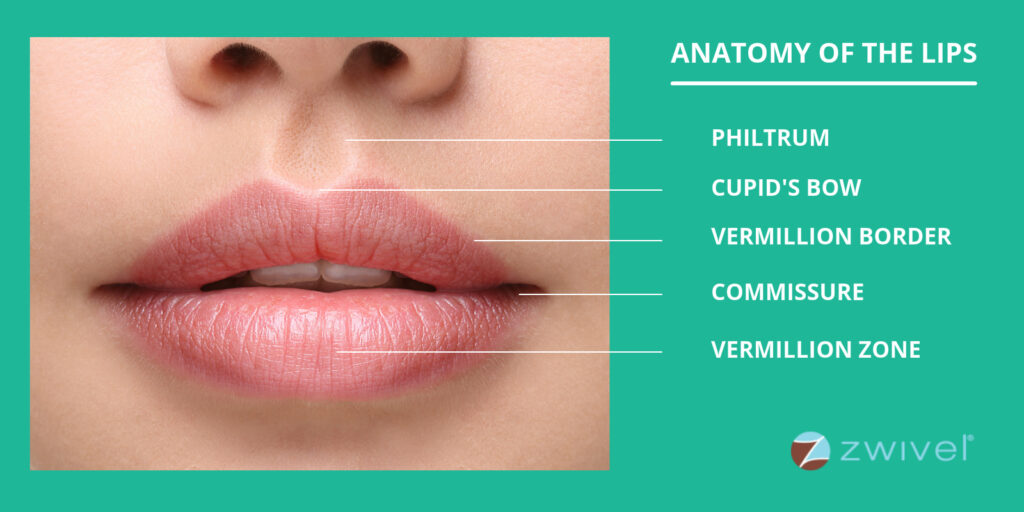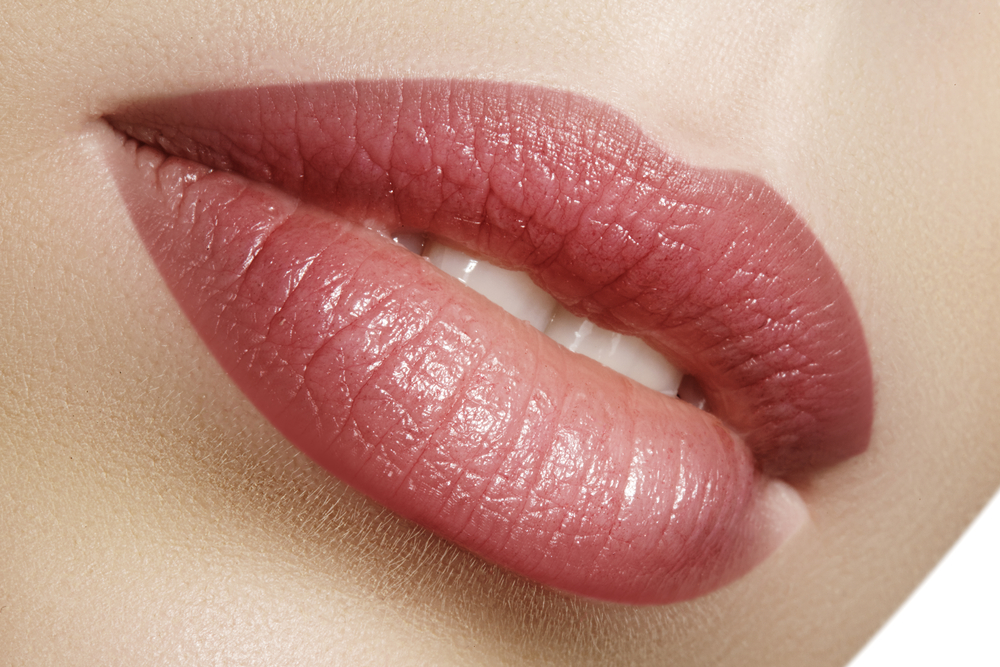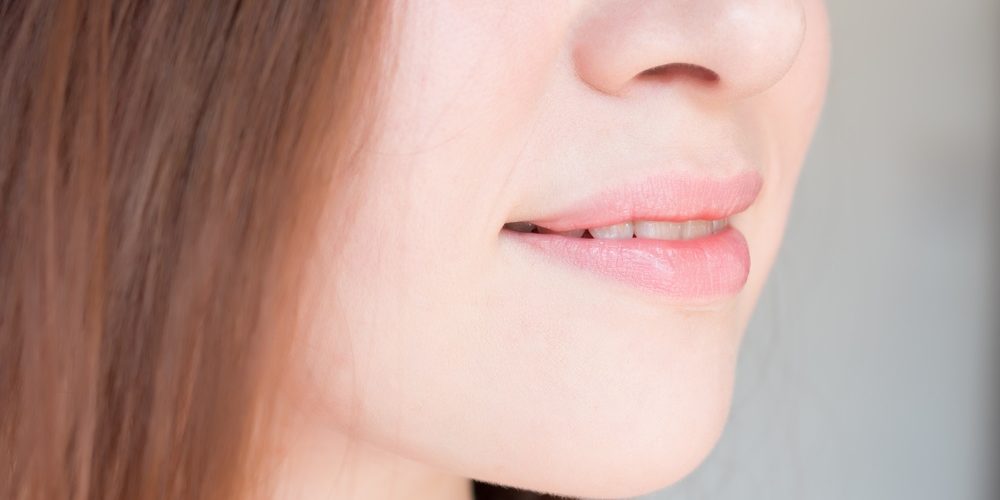Lip augmentation encompasses a variety of cosmetic and surgical procedures designed to add volume and shape to the lips.
You might be a good candidate for lip augmentation if:
- You like how your lips look but want to enhance their volume.
- Your lips have thinned out due to aging and you want them to look full and alluring.
- Your lips have lost definition.
- You have wrinkles around your mouth, possibly due to smoking or sun damage.
This guide covers everything you need to know about lip augmentation, from providing an overview of the various techniques to consulting with a plastic surgeon, undergoing the procedure, aftercare, recovery and long-term outcomes.
A brief history of lip augmentation
The desire for plump and reddened lips dates back to ancient times. Various procedures have been practiced around the globe, from natives of Hindu countries to tribes in Africa and South America. African women in the Ubangi tribe stretched their lips using bone. Piercings were also common in Africa and South Asia.
Fast forward to the United States where, in the early part of the 20th century, surgeons tried using paraffin to plump up the lips. In its hard form, paraffin is wax; in soft form, it is petroleum jelly. Initial results seemed promising, but plastic surgeons soon became aware of certain problems with paraffin, among them the migration of materials, ulceration, pulmonary embolism, and other adverse reactions. By 1914, its use by those pioneers of modern plastic surgery was already on the way out.
In the 1960s, silicone injections emerged as a popular method for lip augmentation. The advance was initially applauded. However, after identifying the hazards of silicone in breast implants (shifting of contents, granulomas and autoimmune reactions), authorities such as the Food and Drug Administration (FDA) and American Society of Plastic Surgeons (ASPS) cautioned against its use.
As of today, neither the FDA or ASPS support silicone to augment the lips. Its use in lip augmentation remains controversial even if many of the early fears were not actualized. Many plastic surgeons now actually consider silicone to be safe and state that, based on their experience and excellent results, those early warnings were unwarranted.
In the 1980s, injections of bovine collagen were introduced but its use necessitated an allergy test beforehand. Additionally, test results were not available for several weeks afterward, lending this method to become somewhat unpopular.
The desire for more tolerable, user-friendly dermal fillers — with convenience and speed valued both by surgeons and their clientele — has led to the development of better options. Speed, ease of application and little downtime explain why injectable hyaluronic acid fillers now dominate the field.
Celebrities fuel the lip augmentation craze
The rise in lip augmentation across the United States and internationally could, in some part, be attributed to the celebrities who have received the treatment. Take Angelina Jolie for instance, with her perfectly plump, full lips.
Lip augmentation is everywhere in the entertainment world and, not surprisingly, has hugely influenced the public to follow suit. According to statistics from the ASPS, 27 million procedures were performed across the country in 2015.
Men are starting to become a part of that customer base as well, with a total of 1,000 guys undergoing lip enhancement procedures in the United States that year. Plastic surgeons estimate those numbers will only increase.
Another factor in the widespread growth of lip augmentation involves the proliferation of selfies and social media celebrities. One notorious example of this is Kylie Jenner, whose bee-stung mouth has been the subject of much scrutiny – and speculation. Close to 100 million fans follow her on Instagram, where she fuels cosmetic procedure rumors with her provocative glamour shots.
Fundamental lip anatomy
The lips are arguably the most alluring part of the face. Emotionally suggestive, evoking intimacy and secrets – it’s no wonder lip augmentation is so popular. After all, plump, full lips make people look sexier and more attractive.
The parts of the lips
What we call our upper and lower lips are known technically as the “labium superius oris” and “labium inferius oris,” respectively.
The vermilion border is the place where the lips meet the surrounding skin of the mouth, while the completely red area is called the vermilion zone. The border between the vermilion and the skin is most sharply defined in the upper lip.
The vertical area in the center of the upper lip that extends from the lip to the nose is known technically as the philtrum (also known as the philtral ridge and groove) and it creates a shape known as the Cupid’s bow. The lower lip is less defined, but some people also have a minor central ridge. Accordingly, they possess a complex nerve, vascular and muscular structure.
What are lips made of?
When viewing the lips in cross section, you see six layers. The skin, or epidermis, is the outermost portion, followed by a dermal layer, a subcutaneous layer and then by muscle, submucosal and mucosal layers.
Between the muscle and submucosa are the neurovascular, lymphatic and glandular structures. The vermilion is the red-pigmented portion of the lips. Many nerves and blood vessels lie beneath a layer of specialized squamous epithelium at the vermilion, making the lips very responsive to both touch and food.
Several muscles are involved in lip function, the most important being the orbicularis oris, which encircles the lips and is key when pursing and/or opening them. Other muscles extend out into the cheeks, allowing for a wide variety of facial expressions.

Lip augmentation benefits
In contrast to skin elsewhere on the face, lip skin is thin and friable, with no hair or sweat glands. Hence, hydration is important to keep the lips smooth and prevent them from chapping.
Furthermore, the lips do not maintain their fullness and definition with age. Aging blunts their natural curves, leaving them thinner, flatter and with less definition. Exposure to sun and cigarette smoking are also hard on lips, making them drier, less elastic and chafed. Over time, the boundary of the vermilion blurs, the Cupid’s bow projects less and the philtrum flattens.
Lip augmentation encompasses a variety of procedures that restore or accent the natural curves of the visible portion of the lip, the vermilion. Lip enhancement also alters the shape of the Cupid’s bow, or the relation between the vermilion and the skin going up towards the nose.
Besides making lips more symmetrical, people may want stronger definition – a well-defined vermilion-cutaneous border or philtrum, for example. Lip enhancement can even help cover the gums if they’re visible when smiling.
An experienced plastic surgeon will take a good look at your face, not just your lips, when determining the best approach to pursue. A good augmentation will look natural and not overpower the rest of your face.
An overview of lip enhancement techniques
There have been many advancements in lip augmentation over the years, resulting in more predictable, long-lasting and reproducible outcomes. Clients can choose what’s best suited for them based on their unique preferences, finances and concerns about the durability or transiency of each of the different types.
The following are the main types of lip augmentation used today.
Dermal or soft tissue fillers
This procedure involves injecting filler into the lips to shape and add volume to them. According to the ASPS, injectable fillers are currently the most popular technique for lip augmentation, used on 80% to 90% of patients.
The greatest advancement is with hyaluronic acid (HA) fillers, which are far more biocompatible, thus safer and longer-lasting than the last generation of fillers. You see results almost immediately and they can last up to six months, at which point, if you’re really pleased with how you look, you could undergo a second treatment.
Injected fat transfer
Unlike the injectable biological fillers, this method is considered permanent. An injected fat transfer is just as it sounds: fat is removed from your own body using a syringe and reinjected into your lips. The very small amount of fat used in the procedure is typically taken from your abdomen or buttocks.
Because the surgeon is injecting you with your own tissue, it will not be rejected or trigger allergic reactions. Unlike biological fillers, however, the treatment may require several visits to the doctor as one can expect only about 50% of the fat injected to survive.
Dermal grafts
Surgery for dermal grafts requires the extraction of deeper tissue from the dermis — the underside of your skin — often from your abdomen, and the transferral of it your lips. Dermal grafts are considered permanent.
Vermilion advancement
In this procedure, an incision is made along the border of the vermilion to remove a strip of skin above the upper lip, or below the lower lip. The vermilion is advanced up and out and then sutured into place prior to being shaped, effectively increasing the size of your lips.
Lip implants
As lip implants mimic the natural tissue of the lips, they permanently alter their shape as well. For the lip implant procedure, which usually takes about an hour, the surgeon typically makes an incision at the corners of the mouth or, in some cases, elsewhere on the lips.
To fit the implant, the surgeon creates a thin tunnel, inserts the implant and threads it through the lip. It is then trimmed and incision closed.
Lip lift
This procedure’s purpose is to remove excess skin that could be dragging down the upper lip. There are four surgical approaches to correct this: a direct lip lift, an indirect lip lift, a corner of the mouth lift ,and the V-Y lip advancement technique.
Lip lifts are pricier than other options, with out-of-pocket costs ranging between $3,000 and $6,000.
- A direct lip lift is performed to give the vermilion more prominence. A surgical incision is made on or above the white skin bordering the vermilion. Tissue is removed and both peaks of the Cupid’s bow are moved up and outward to the corners of the mouth. Incisions are also made below the lip to afford the lower vermilion increased projection.
- An indirect lip lift is concerned with the central part of the upper lip. It is typically done using hidden incisions at the base of the nose to remove tissue. The skin is then lifted and sutured to expose more of the upper vermilion.
- A corner of the mouth lift — also referred to as a ‘Smile Lift’ — involves creating a small triangular excision of the facial skin around the upper oral area and then a lift of the lateral corners of the lip. For a downward turning mouth, the procedure is performed using small incisions on the side of the mouth and removing the extra skin.
- A V-Y lip advancement expands the vertical exposure of the vermilion permanently from one corner of the mouth to the other.
RELATED: Light Up the Room with a Grin Lift — Plastic Surgery to Make You Smile
Injectable lip fillers
Injectable fillers are used to temporarily fill out thin or wrinkled lips. They are made of either natural, biocompatible or synthetic materials and are also known as soft tissue fillers.
The FDA has approved the use of these fillers, because the body eventually absorbs them and the lip plumpness goes back to baseline. Injectable lip fillers generally last 6-12 months. To undergo a safe lip augmentation, check that your doctor is using FDA-approved fillers, which are only available from licensed providers.
Hyaluronic acid fillers
Hyaluronic acid (HA) fillers are the most frequently used fillers in the United States today. They come in prepackaged vials that are ready to inject and are approved by the FDA for lip augmentation in adults 21 years old and older.
According to the most recent statistics compiled by the ASPS, 80% of all injectable dermal fillers were comprised of HA. As with other injectables, results with HA last from 6-12 months. Some people won’t need more than one vial for lip augmentation; two vials is probably too much. Many HA fillers also contain Lidocaine to help numb the lips and make you comfortable during the procedure.
Filler application techniques have improved considerably in recent years with the addition of a cannula as a means of insertion. Traditional needles were prone to causing more pain, tissue damage, bruising, laceration, and often required multiple punctures. The widespread use of blunt-tip cannulas in lip augmentation procedures has been a significant improvement, with the advantages being far less bruising and downtime for patients.
The major brands of HA fillers currently approved by the FDA for lip augmentation in the United States are:
- Juvederm Ultra XC — plumps thin lips and fills in smile lines
- Juvederm Volbella XC — adds volume and smoothes vertical lip lines
- Restylane — improves look of smile lines and enhances lips
- Restylane-L — restores fullness to lips and gets rid of nasolabial folds
- Restylane Silk — enhances lips and manages wrinkles around the mouth
The results of these procedures are visible almost immediately, and patients who choose HA fillers for treatment tend to fare well from the experience. However, some may suffer temporary pain, redness and swelling at the injection site.
Lip fillers risks and side effects
Of all lip augmentation procedures, injectable fillers are considered the safest. This is because, as stated above, they are temporary and constituted of largely biocompatible materials. In the event of a severe adverse reaction, the filler can be dissolved if necessary by injecting an eraser enzyme called hyaluronidase.
The most common side effects are:
- Short-term bruising
- Redness
- Swelling
- Pain
- Itching around the injection site
These side effects are most likely to be concurrent with the procedure and generally go away within two weeks. Less common side effects include:
- Infections
- Lumps
- Bumps
- Discoloration
- A change in pigmentation
- Allergic reactions, which can occur due to the presence of Lidocaine
The most serious complication is occlusion, or significant compression of the blood supply to the lip by the injected filler. This can lead to necrosis (tissue loss) of the lip. This is very rare when performed by a skilled and experienced injector. When detected in time, it can be treated with hyaluronidase.
To minimize risks, the FDA cautions consumers not to buy fillers online because they may be fraudulent, tainted and/or harmful. Have your lip augmentation performed in the office of a certified practitioner. At the consultation, ask to see before-and-after photos of previous patients and find out how much experience your provider has with injectables.
Take note that many plastic surgeons supervise ancillary staff, including nurses, aestheticians, physician assistants and others, who perform the injections in their office. This practice varies according to state or provincial regulations, so it’s important that you learn just how much experience the person who will be administering your injections actually possesses.
It can’t be emphasized strongly enough that people need to steer clear of unlicensed providers working independently. Because of hazardous fillers and untrained operators, catastrophes can occur. Don’t let one happen to you.
Lip implants
Non-biodegradable polymers, collagen and saline are the main materials used in lip implants today. The leading implant materials are Gore-Tex, Softform, Ultrasoft and Alloderm.
The first three, Gore-Tex, Softform, and Ultrasoft, consist of a non-biodegradable synthetic polymer called expanded polytetrafluoroethylene (ePTFE). The material is soft, flexible and porous, permitting the occurrence of tissue ingrowth. All three implants are made from a medical grade version of the same material used in manufacturing tents and raincoats.
Expanded PTFE has been applied surgically for several years. Post-injection, these polymer-based implants might feel a little rigid, but tiny pores in the material permit growth of natural lip tissue, essentially making the implants part of the lip structure.
Alloderm is one of the first lip implant materials approved for use by the FDA. It is made of natural collagen tissue harvested directly from the patient through fat removal or liposuction. Alternatively, donor tissue can also be used. Unlike Gore-Tex, Softform or Ultrasoft, Alloderm is not permanent. Because the collagen is eventually reabsorbed into the patient’s own tissue, the results only last 6 to 12 months.
A word about silicone lip implants
The FDA has not approved liquid silicone or silicone gel as an injectable to augment tissue anywhere in the body. The ASPS has warned about the potential hazards of silicone for cosmetic purposes based on the migration of material in breast implants.
However, many plastic surgeons treat patients with PermaLip implants, which contain silicone, and report excellent results with little to no hazard.

RELATED: Read My Lips — Volbella Creates the Perfect Pout
Ideal candidates for lip augmentation
Though initially attracting a clientele of people aged 65 and over, these days lip augmentation appeals to many adults and, so long as they’re healthy, everyone is considered an excellent candidate for the procedure.
Whether your concern is thin, or thinning, lips, a lack or loss of definition or an asymmetrical mouth, so long as you’re of age and of sound mind and body, your candidacy is assured.
If you’re seriously considering lip enhancement, educate yourself about the risks and benefits of the various procedures. You and your plastic surgeon might decide on injectable fillers as the ideal technique, particularly if this is your first experience with lip augmentation. The procedure is minimally invasive and temporary, allowing the patient to see how their lips will look once augmented before committing to a permanent change.
In fact, many plastic surgeons recommend injectables before more invasive strategies are tried.
Other reasons injectables are a good choice include:
- You want faster results. In one to two weeks after the initial swelling and bruising has gone, you’ll be able to see how your lips look.
- You’re not sure how much augmentation you want.
- You don’t want to undergo surgery.
- It’s a minimally invasive procedure that requires little aftercare or recovery time.
- Injectable fillers are one of the most affordable options available.
Note that you cannot receive treatment if you have cold sores, scarring on your lips, diabetes or blood-clotting issues. Many plastic surgeons will still treat you if you have a history of cold sores, but not if one is active. However, as a general rule, surgeons recommend taking antiviral medication for 10 days to contain a flare-up as well as prevent a further cold sore from appearing just prior to the procedure.
Smoking tobacco definitely compromises healing and the duration of results, however, most plastic surgeons will not decline a patient because of it.
Inform your surgeon at the start if you have an autoimmune condition such as rheumatoid arthritis. There is no consensus on this, but some clinicians might be reluctant to treat someone with this condition. It is also imperative to inform your surgeon up front if you’re allergic to any medications.
How much does lip enhancement cost?
Lip augmentation is a cosmetic procedure, meaning that all costs are paid out of pocket and not covered by most insurance plans.
Costs vary considerably, depending on the location of the treatment, the individual rate of your particular surgeon and the procedure you’re having done.
While injections run between $500 and $800 per syringe, semi-permanent and permanent lip procedures are more involved and more expensive. Lip implants are more labor intensive. To just treat the upper lip, the procedure can cost between $1,500 and $3,000. If you need both upper and lower lip grafts, costs can be as high as $6,000.
Many plastic surgeons offer installment payment plans to accommodate individuals with more challenging financial situations.
Preparing for a lip augmentation
First and foremost, make sure that your expectations match your doctor’s. If there’s a particular result you’re hoping for, bring a photo of it to your consultation with the plastic surgeon. To help you make the best decision, ask to see before-and-after photos of patients they’ve treated with lip fillers, fat transfers and implants.
Also review and discuss your medical history: conditions, drug allergies, infections and general health status. Let your surgeon know if you have a history of herpes or are having a flare-up. Antiviral prevention will be needed to avoid a potential flare-up brought about by the treatment itself.
To ensure the best results, many plastic surgeons request that you stop smoking for several weeks before and after your procedure as it will interfere with the healing process.
Over-the-counter or prescription medications, including aspirin and nonsteroidal anti-inflammatory drugs that increase the risk of bleeding, will need to be discontinued for as long as one week prior to the procedure and another week following it. Because fish oil and Vitamin E thin the blood, thus making bleeding and bruising more likely, they are also prohibited.
If you want to have your lips enhanced for a special event, give yourself at least two weeks for the swelling and bruising to resolve. It is not a last minute option.
What to expect on the day of the procedure
Given that lips are extremely sensitive and injections are painful, anesthesia will be necessary. Anesthesia numbs your lips and the surrounding area, and dissipates similarly to dental ‘freezing’. Depending on the procedure and your tolerance to pain, everything from topical to regional or general anesthesia might be used.
In some plastic surgery offices — depending on state regulations — injections may be administered by qualified nurses, aestheticians or physician assistants under the direct supervision of an experienced plastic surgeon.
Most plastic surgeons prefer to use local anesthetics, often a combination of lidocaine and prilocaine or a regional block. Some fillers come premixed with Lidocaine, which minimizes the pain associated with the injection.
The length of the procedure varies, with minimally invasive injections taking less than 20 minutes, while fat transfer and lip lifts take several hours.
Once the procedure is completed, some numbness, swelling and bruising can be expected for anywhere from a few days to a few weeks, so allow yourself at least 4-5 days after injections before committing to any substantial plans.
Aftercare and recovery tips
Following the procedure you can expect bruising and swelling that may last as long as two weeks. To reduce the swelling and ensure a speedy recovery:
- Keep your head above your heart when resting and sleeping.
- Have flannel-covered ice packs ready to apply for the first 24-to-48 hours after the procedure and beyond, if your surgeon recommends the use of cold compresses.
- Have water available to keep yourself hydrated.
- Avoid aspirin and nonsteroidal anti-inflammatory medicines like Advil or other non-generic types of Ibuprofen because both increase bleeding.
- Do not plan on participating in important activities for at least two weeks to ensure you’ve healed properly and present no side effects.
Frequently asked questions
At what age should I consider lip augmentation?
Patients from their late teens and older have lip augmentation procedures with no ill effects.
Can I get lip augmentation at a spa?
Even though many spas offer lip augmentation, the experience levels and qualifications of the technicians at many spas can be suspect. You should always go with a board-certified plastic surgeon at a doctor’s office or outpatient surgical center.
What if I hate the results of the procedure?
With injectables, the augmentation can be reversed by injecting the enzyme hyaluronidase, which breaks up the filler and reverses it. Your lips will go back to how they were before you had the augmentation.
Can I go to a wedding two days after a lip augmentation?
Ideally, you should give your lips more time to heal. Bruising and swelling may persist. Leave at least two weeks before you plan to attend any major event.
Is lip augmentation painful?
You might feel a pinch at the beginning of the procedure. Some of the fillers contain Lidocaine, which is a numbing agent. Depending on what you’re having done, local topical and needle anesthesia, nerve blocks and general anesthesia will be employed.
What about allergies to fillers used in lip augmentation?
Most fillers are biocompatible and very well tolerated. However, fillers made from animal sources, such as bovine collagen, may cause an allergic reaction. For that reason, an allergy or patch test is recommended beforehand to guard against any potential negative reactions.
Will my health insurance cover a lip augmentation?
No, lip augmentation is considered a cosmetic procedure. You will be required to pay for your lip augmentation out of pocket.
What are the most common side effects with injectable dermal fillers?
Bruising, swelling, redness and itching may occur on the first day following the procedure but rarely last for much longer than that. However, if you are concerned about a persistent side effect, contact your doctor’s office immediately.
Can I take aspirin or ibuprofen after the procedure?
Definitely not. These medications are linked to an increased risk of bleeding. Avoid taking them around the time of your procedure.
Do men get lip augmentations as well?
Yes. Although statistics reveal that just 1,000 men had lip augmentations in 2015, the numbers continue to grow.
Can I have another facial procedure on the same day as a lip augmentation?
Yes. You can, for example, get a facelift, browlift or skin resurfacing on the same day. Your recovery time will be longer, however.
Can nurses, aestheticians or other personnel perform the permanent surgical procedures?
No, the only personnel trained to do invasive permanent procedures are physicians. You should not permit anyone without this training to perform surgery on you.
Can I exercise on the same day as the lip augmentation?
No, you should not exercise around the time of your lip augmentation. It can increase the risk of bleeding or bruising. Your doctor will tell you when you it is safe to resume exercising. Also avoid salty food for a few days before and after the procedure. Salt causes water retention and can exacerbate swelling.










